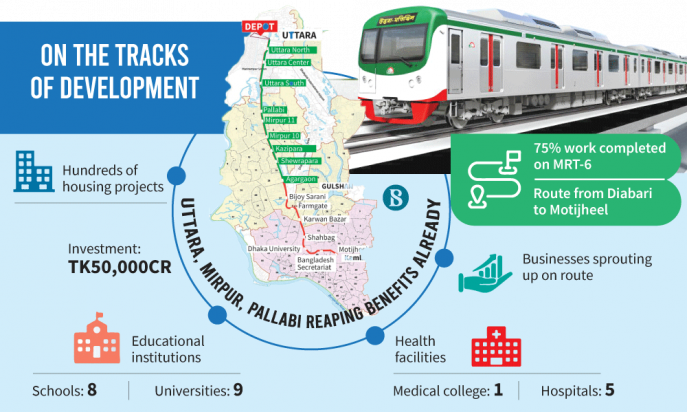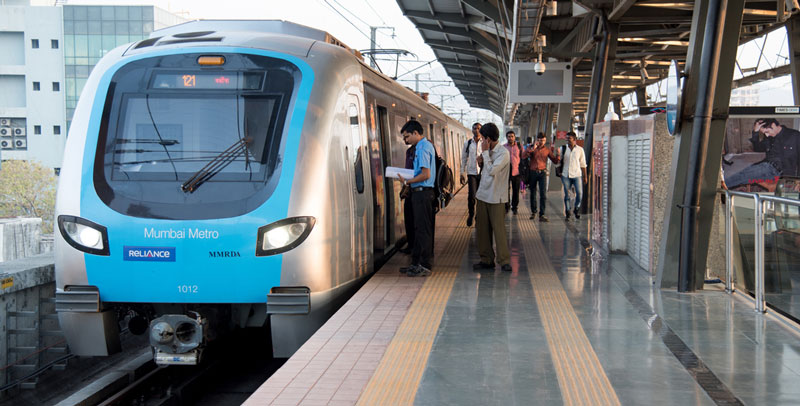Metro rail is important for the development of an area because it provides efficient and reliable transportation, which can help to reduce traffic congestion and pollution. In addition, metro rail can also help to boost economic activity by providing access to jobs, shopping, and entertainment.
The development of an area is essential for the economy and Metro Rail is one of the most important factors in this process. By providing fast, reliable transportation, Metro Rail makes it possible for people to live in one area and work in another. This increases the number of potential customers for businesses, which leads to more jobs and economic growth.
In addition, Metro Rail helps to reduce traffic congestion and pollution, making it a sustainable form of transportation that benefits both the environment and public health.
Table of Contents
How Metro Rail Develops an Area?
Metro rail systems can have a significant impact on the development of an area by providing reliable and efficient transportation that encourages economic growth and development. Here are a few ways in which a metro rail system can affect the development of an area:
Improved access to employment and education: A metro rail system can provide access to job centers and educational institutions, making it easier for people to commute to work or school. This can help to attract and retain workers and students, boosting the local economy.
Increased property values: The presence of a metro rail system can increase the value of real estate in the area, as it makes the location more desirable and convenient for commuters. This can lead to an increase in property values and contribute to the overall economic development of the region.
Redevelopment of underutilized areas: A metro rail system can stimulate the redevelopment of underutilized or derelict areas by making them more accessible and attractive to businesses and residents. This can lead to the revitalization of neighborhoods and the creation of new job opportunities.
Enhanced quality of life: A metro rail system can improve the quality of life in an area by reducing traffic congestion and air pollution, and providing a safe and convenient alternative to driving. This can make the area more appealing to residents and visitors.
One way in which metro rail can contribute to the development of an area is by providing a reliable and efficient means of transportation for residents and visitors. This can make it easier for people to access employment, education, and other opportunities within the city, and may encourage economic growth and development.
Metro rail systems can also stimulate real estate development and property values in the areas they serve. The presence of a convenient and reliable transportation option can make an area more attractive to businesses and residents, which can lead to increased demand for commercial and residential properties.
In addition, metro rail systems can help to reduce traffic congestion and improve air quality by providing an alternative to car travel. This can make an area more livable and attractive to potential residents and businesses.

Finally, metro rail systems can serve as a catalyst for urban redevelopment and revitalization. The construction of a metro rail line can stimulate investment and development in underutilized or underserved areas, leading to the creation of new jobs, businesses, and housing opportunities.
What Makes the Metro System More Sustainable?
The Metro system is one of the most important pieces of infrastructure in any city. It is a lifeline for many people who rely on it to get around, and it plays a vital role in the economy. However, the Metro system is not without its problems.
One of the biggest challenges facing the Metro system is sustainability.
There are a number of factors that contribute to the unsustainable nature of the Metro system. First, the Metro system is very energy intensive.
The trains require a lot of electricity to operate, and this electricity often comes from dirty power sources such as coal-fired power plants. Second, the Metro system produces a significant amount of waste. Each day, there are tons of garbage and recyclables that are generated by the trains and stations.
This waste often ends up in landfills or incinerators, which are two of the least sustainable methods for dealing with waste.
So what can be done to make the Metro system more sustainable? One solution that has been proposed is to switch to cleaner power sources for the trains.
This would involve investing in renewable energy sources such as solar and wind power, which would significantly reduce the carbon footprint of the Metro system. Another solution is to improve waste management practices at all levels of theMetro system. This could involve things like increasing recycling and composting rates, as well as working with businesses alongthe train routes to reduce packaging and other forms o f waste .
Implementing these solutions would go a long way towards makingtheMetro sys tem more sus tainable .

Credit: blogs.adb.org
Why Metro Rail is Important?
A metro rail, also called a rapid transit or subway system, is an important part of a city’s public transportation infrastructure. Metro rails can help to reduce traffic congestion and pollution, and they can also offer a fast and convenient way to get around a city. In many cases, metro rails are faster and more efficient than buses or cars.
There are many reasons why metro rail is important. First, metro rail can help to reduce traffic congestion in a city. By providing an alternative to driving, metro rail can take some of the pressure off of a city’s roads.
This can lead to shorter commute times and less time spent sitting in traffic. Second, metro rail can help to reduce pollution levels in a city. Buses and cars emit pollutants into the air, but trains run on electricity, which is much cleaner for the environment.
Third, metro rail offers a fast and convenient way to get around a city. In many cases, it is faster than taking a bus or driving because there is no need to deal with traffic congestion.
Are Metros Good for the Environment?
As the world becomes more and more populated, cities are struggling to find ways to accommodate all of the people while still maintaining a livable environment. This has led to the rise in popularity of public transportation, specifically subways and metros. But are these really good for the environment?
The short answer is: yes, metros are good for the environment. In fact, they’re one of the best options for reducing your carbon footprint. Public transportation generally requires less energy per passenger than either private cars or buses, and metros have an even better track record.
One study found that a single subway train can move 4 times as many people as a bus and emits only 1/10th of the pollution [1]. That’s because trains are much more efficient than buses – they don’t have to start and stop as often, so they use less fuel overall. And since metros typically run on electricity (which can be generated from renewable sources), their emissions are even lower.
Of course, not all public transportation is created equal – some systems are better than others at reducing pollution. For example, light rail systems (like San Francisco’s BART) tend to be even cleaner than subways because they use less energy per passenger mile [2]. So if you have the option to take light rail instead of a subway or bus, it’s probably your best bet for reducing your carbon footprint.
Why is Metro Needed for Big Cities?
The need for a metro in big cities is dictated by the simple fact that these cities are teeming with people. A metro provides an efficient way to move large numbers of people around a city, which is essential in bustling metropolises. By having a dedicated underground transportation system, a city can avoid the gridlock and pollution that comes with relying too heavily on cars and buses.
Moreover, a well-designed metro can help to spur economic development by making it easier for people to get to job centers, businesses, and cultural attractions. Big cities need metro systems in order to function at their best.
Conclusion
A metro rail system can play a key role in the development of an area by improving access to employment, education, and other amenities, and by stimulating economic growth and redevelopment.
The blog post discusses how metro rail is important for the development of an area. It cites several reasons why this is the case, including that metro rail can spur economic growth, improve quality of life, and increase accessibility. The post also notes that while metro rail projects can be costly and require significant planning, they can ultimately pay off for cities and communities.
